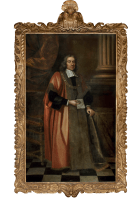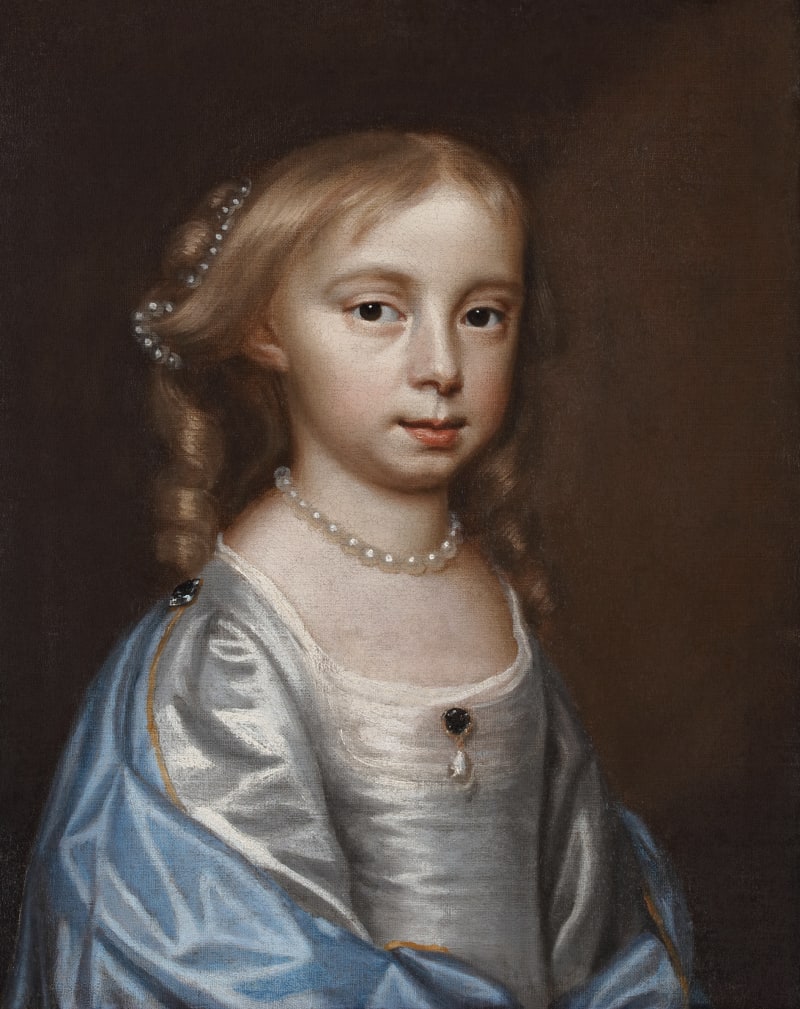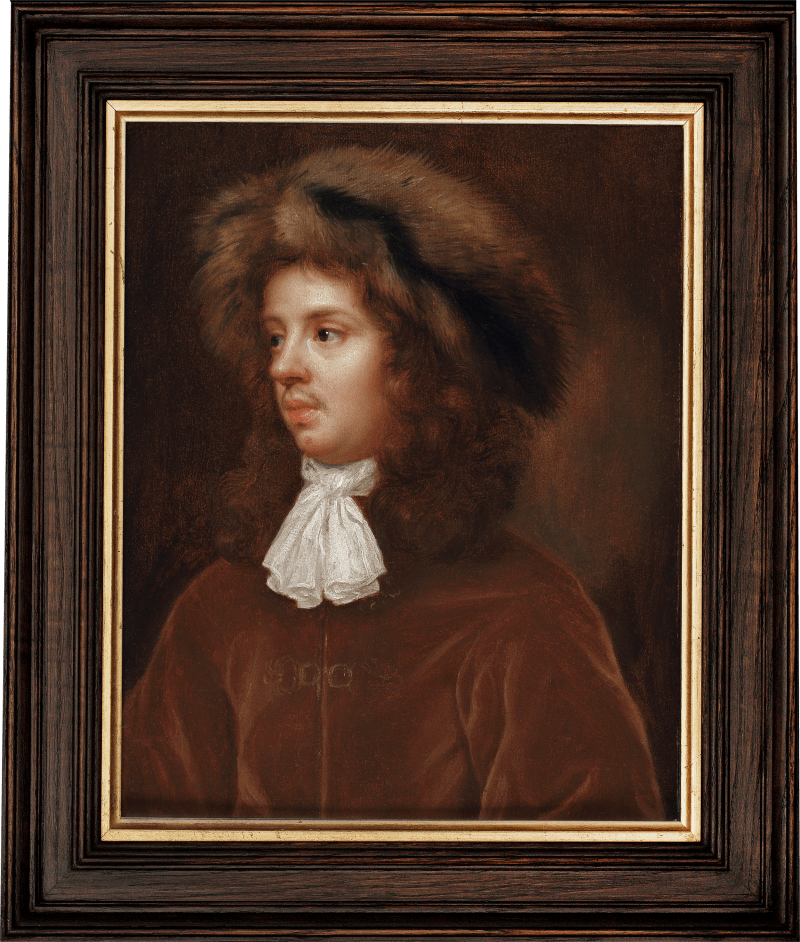Full-length portraits are extremely rare in Beale’s oeuvre, and only two known works on this scale by the artist survive today. Conceived for public display, this formal portrait “from head to foote” was commissioned in 1676 and remained in Beale’s studio until at least until 6 January 1677, when Sir Peter Lely had a chance to admire it in person, together with a group of other works, commenting: “Mrs Beale was very much improved in her painting.”[1]
Sir William Turner was born in Kirkleatham, North Yorkshire. In 1661 he was appointed Master of the Merchant Taylors’ Company and subsequently began a remarkable civic career as Alderman (until 1687), Sheriff (1662–63), Lord Mayor of London (1668–69) and MP for London (1690–93). He was knighted in 1662. Turner led the reconstruction of the City of London after the Great Fire of 1666 and examined expenditures during the Anglo-Dutch Wars. In 1669, Turner was appointed President of Bridewell and Bethlehem Hospitals, and the...
Full-length portraits are extremely rare in Beale’s oeuvre, and only two known works on this scale by the artist survive today. Conceived for public display, this formal portrait “from head to foote” was commissioned in 1676 and remained in Beale’s studio until at least until 6 January 1677, when Sir Peter Lely had a chance to admire it in person, together with a group of other works, commenting: “Mrs Beale was very much improved in her painting.”[1]
Sir William Turner was born in Kirkleatham, North Yorkshire. In 1661 he was appointed Master of the Merchant Taylors’ Company and subsequently began a remarkable civic career as Alderman (until 1687), Sheriff (1662–63), Lord Mayor of London (1668–69) and MP for London (1690–93). He was knighted in 1662. Turner led the reconstruction of the City of London after the Great Fire of 1666 and examined expenditures during the Anglo-Dutch Wars. In 1669, Turner was appointed President of Bridewell and Bethlehem Hospitals, and the year this likeness was painted he established a hospital in his home village. Known as Sir William Turner’s Almshouses, it still stands as a retirement home.[2]
Charles Beale recorded this portrait as having been commissioned by Francis Knollys as a gift to Bridewell Hospital: “He gave it to be sett up in ye Hall at Bridewell. Sir Wm Turnr haveing been chosen president of that House in ye yeare he was Lord Mayor of London.”[3] A close member of the Beales’ circle, the “worthy and kind friend”[4] Francis Knollys (d. 1694) was secretary to the 2nd Earl of Strafford and a member of the Court of Governors of Bridewell. Knollys introduced the Beales to Turner when the two men were supervising the construction of the new Bethlehem Hospital at Moorfields in 1676. Known as ‘Bedlam’, the hospital was designed by natural philosopher and surveyor Robert Hooke FRS (1635–1703). He started work on his designs in July 1674 around the time he seems to have helped Beale secure two sitters from the Royal Society: Robert Boyle (April 1674) and Sir George Ent (August 1674).[5]
Encouraged by testimonials from Knollys and Hooke, Bridewell’s governors were delighted to receive the gift of a portrait by the sought-after Pall Mall artist. With Bridewell’s great hall in mind, Beale painted Turner in his mayoral robes and magnificent gold chain of office, using an early seventeenth-century compositional formula suited for the length of the red and brown cloak. Turner stands in front of a wooden chair the artist used in many portraits of clerics. The black-and-white chequered flooring adds dynamism to the austerity of the subject.
Returning many favours, Beale gave Knollys – one of the Beales’ main creditors – the portrait “in consideracon of his most obligeing kindness to us upon all occasions”.[6] She therefore painted the picture for free, and, as Helen Draper suggests, the portrait should be regarded as “part of a commercial transaction and, if not literally repaying the debt, then certainly acknowledging it in material and symbolic terms”.[7]
[1] Beale, ‘Notebook 1676/7’.
[2] A free school for boys was opened in the same village after his death thanks to an endowment he left to his great-nephew. Turner’s charitable legacy continues through the Sir William Turner Foundation, which is still active today. A controversial figure, at his death, pamphleteers remembered Turner for “his flogging spirit as the scourge of the capital’s prostitutes”, as well as for being “the City’s darling and the orphans’ joy”. See Hayton, Cruickshanks and Handley 2002.
[3] Beale ‘Notebook 1676/7’; Heinz Archive, Richard Jeffree Papers, 7/12.
[4] Ibid.
[5] Robert Hooke’s Diary, 1672–1683. Available at: https://www.cityoflondon.gov.uk/things-to-do/history-and-heritage/london-metropolitan-archives/collections/robert-hooke-diary (accessed 15 March 2024).
[6] Beale ‘Notebook 1676/7’; Heinz Archive, Richard Jeffree Papers, 7/12.
[7] Draper 2020, p.166.













